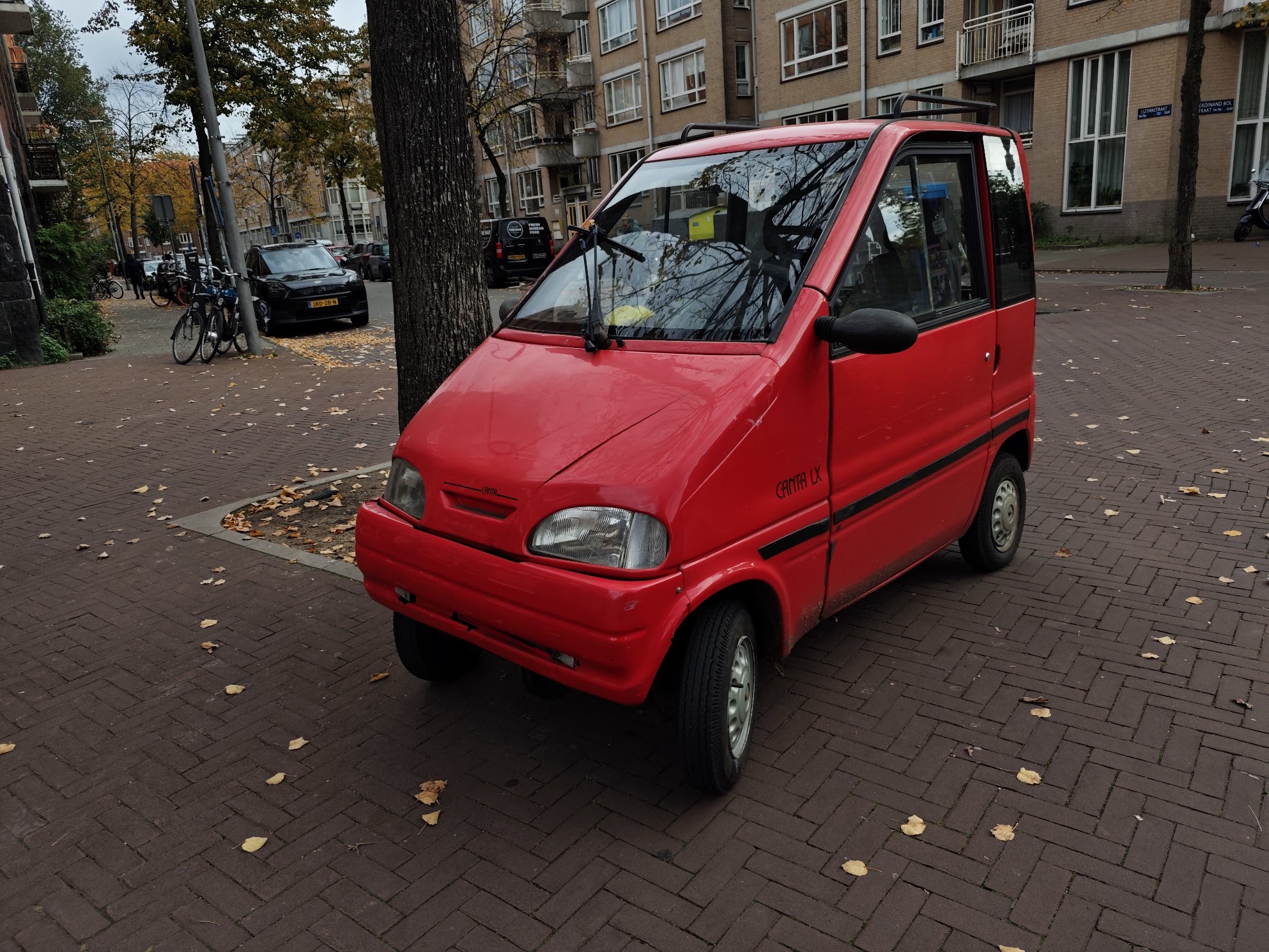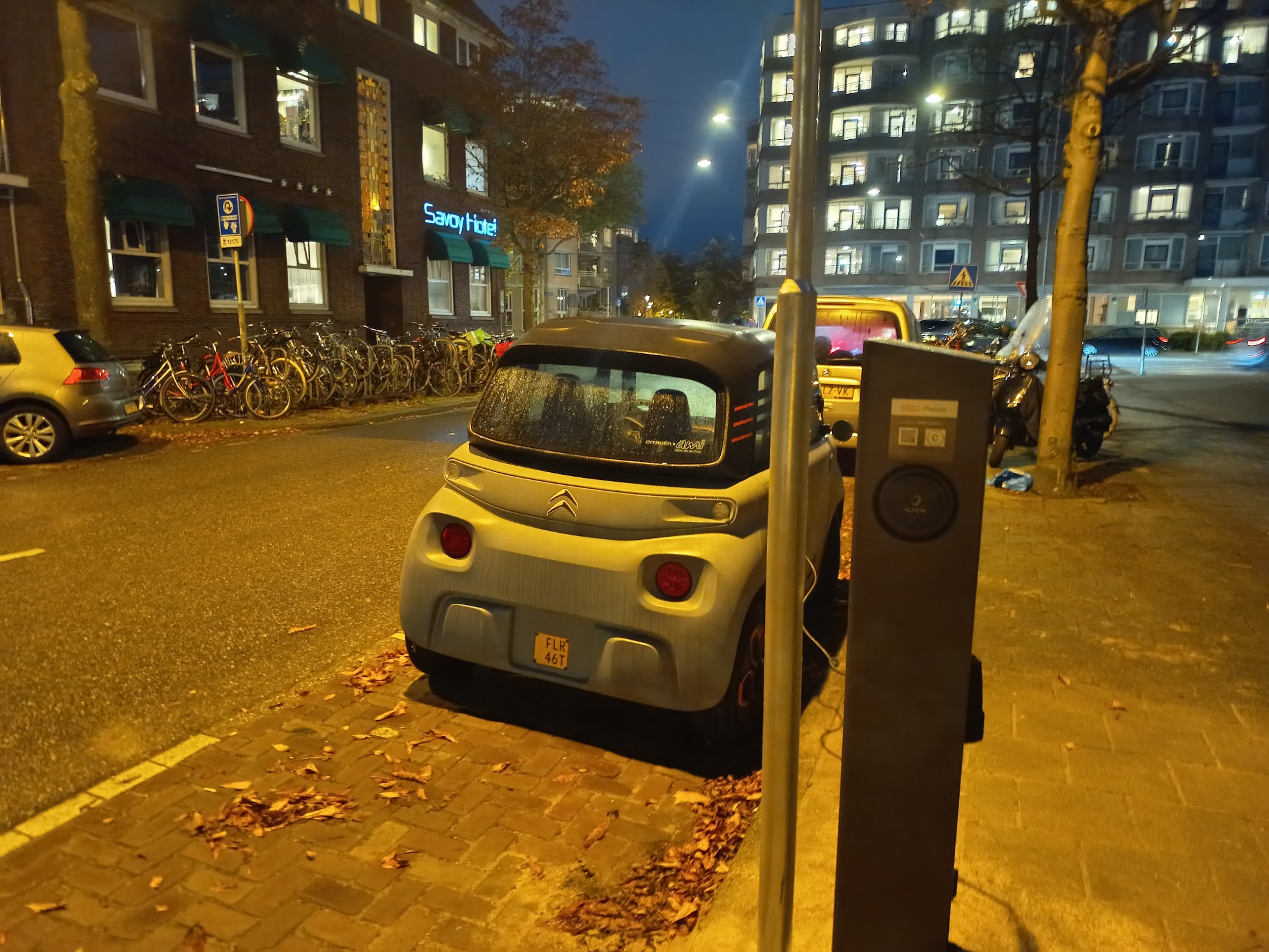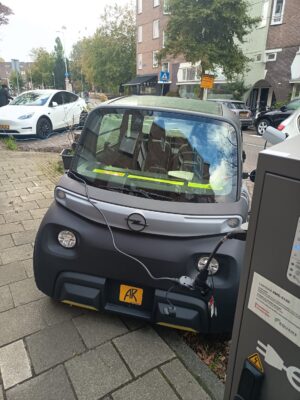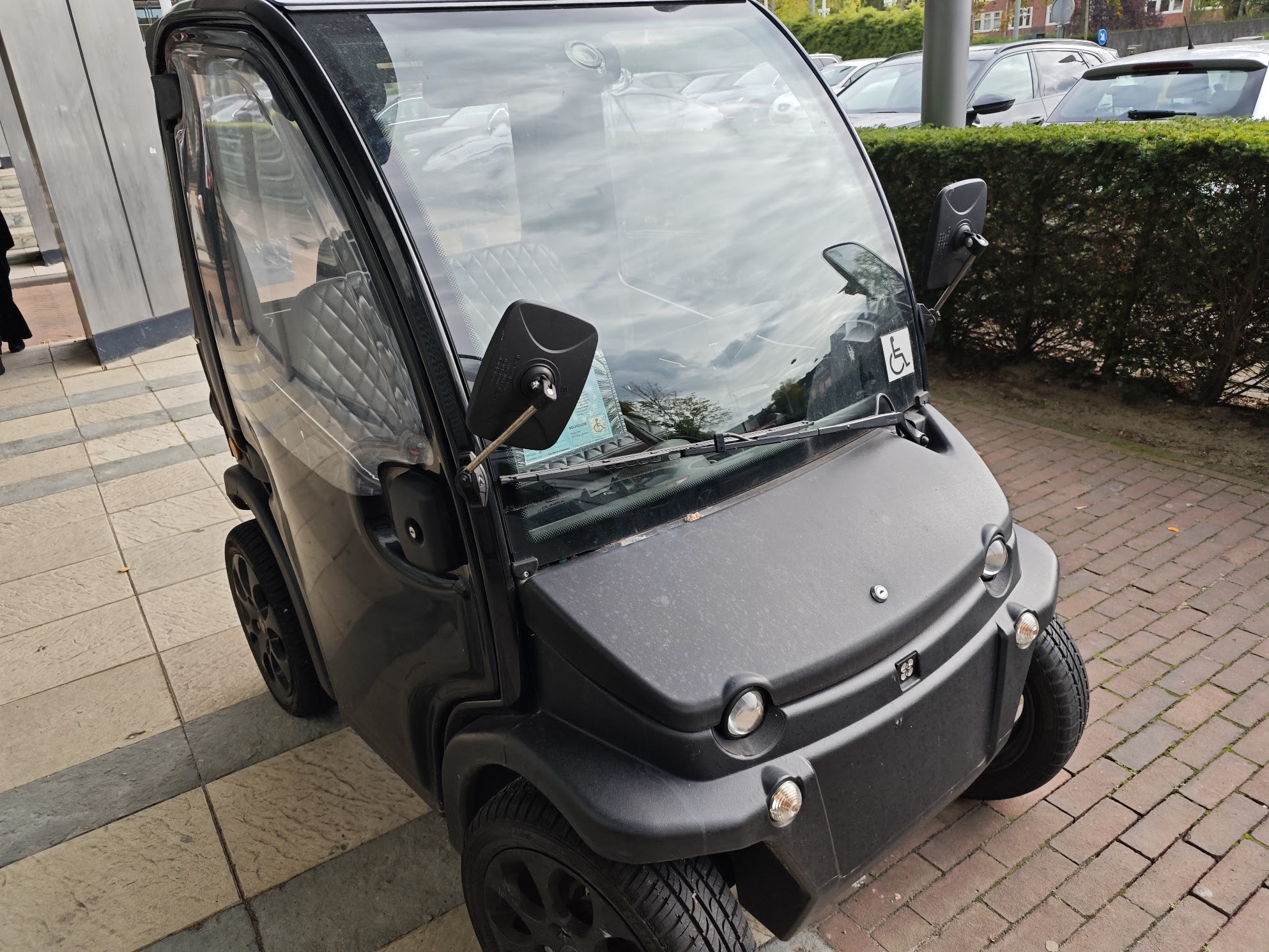Support CleanTechnica’s work through a Substack subscription or on Stripe.
I am now in this wonderfully cultural city that floats on piles embedded centuries ago. I am here for the Bentley Systems Year of Infrastructure and will report on how clean energy is compelled by good infra later.
Now I want to talk about walking through Amsterdam’s narrow streets when what looks like a motorized shoebox glides past me. Then another. And another. Some are bubble-shaped throwbacks to 1950s Italy, others look like they were designed by Apple, and a few could barely pass off as a car. Some actually evolved from golf carts.
This is Europe’s micro electric vehicle revolution, and it’s absolutely delightful.
I’ve spent the past few days watching these pint-sized EVs navigate Amsterdam’s challenging urban landscape, and I’ll admit something — I’m converted. Not because I suddenly want to trade my car for a vehicle the size of a refrigerator, but because witnessing this micro-mobility ecosystem in action makes you realize how brilliantly it solves real problems.
I wanted to ride one, but couldn’t find a sponsor. I wanted to rent one but couldn’t fit my schedule into the Aixam’s test drive online. Anyways, watching them in the streets was enough information.
The Secret Sauce: Quadricycle Classification
Europe’s micro EV boom didn’t happen by accident. It’s built on a regulatory foundation called the quadricycle classification that gives these vehicles a sweet spot between a bicycle and a car. Think of it as a legal loophole that actually makes sense — these tiny EVs can operate under far less stringent rules than full passenger cars, which means lower costs, simpler licensing, and designs optimized purely for city life rather than highway safety standards.
In the Netherlands, they’re called brommobiels (moped cars), and the rules are straightforward: top speed of 45 km/h, drivable with just a moped license (though a regular driver’s license works too), and designed for streets, not bike paths. That last part is crucial — these aren’t glorified e-bikes. They’re legitimate enclosed vehicles that protect you from Amsterdam’s legendary rain while you run errands.
The Fossil-Fueled Brommobiels

Before the current electric wave, the quadricycle category was dominated by small internal combustion engine vehicles that established the market’s viability. Walk around any Dutch city and you’ll still see plenty of these transitional vehicles — mostly French diesel-powered models that proved Europeans would embrace ultra-compact cars for urban mobility.
The market leaders were (and in many cases still are) French manufacturers like Ligier, Microcar, and Aixam. These brands have been producing compact quadricycles since the 1970s and 1980s, primarily with small diesel engines. Ligier even has racing heritage — it fielded a Formula 1 team — bringing a surprising pedigree to vehicles that top out at 45 km/h.
But the most uniquely Dutch contribution to this category is the Canta, developed in 1995 through a collaboration between Waaijenberg and Delft University of Technology. The Canta is fascinating because it’s even narrower than typical brommobiels — just 1.10 meters wide — which classifies it as a “mobility aid” rather than a vehicle. This means no driver’s license required, and it can legally use bike paths and even sidewalks. Originally designed for disabled drivers with swivel seats and wheelchair-accessible variants, the Canta became a common sight across the Netherlands, still manufactured in Veenendaal today.
These ICE quadricycles served a crucial transitional purpose. They proved the concept, established the regulatory framework, and demonstrated that Europeans were ready for ultra-compact urban vehicles. Now, as electric technology has matured and urban air quality concerns have intensified, these diesel-powered pioneers are gradually being replaced by their electric successors — a transition that’s happening faster than many predicted.
The Electric Revolution: Numbers Tell The Story
The shift to electric quadricycles is accelerating dramatically. The Citroën Ami alone has sold over 43,000 units since its 2020 launch, with 2023 marking a breakthrough year when it became France’s best-selling quadricycle across all propulsion types — electric and ICE combined. In Italy, the Ami’s second-largest market, it captured 61% of the electric quadricycle segment in 2023 with over 6,300 units sold. Even in Spain, where it launched more recently, the Ami has already accumulated over 2,200 sales and commands a remarkable 68.9% market share in electric quadricycles.
The Microlino, positioned at the premium end, produced approximately 3,700 vehicles in 2024 and achieved all 3,000+ of its initial European sales in just one year of full production. These aren’t niche curiosities — they’re legitimate volume products that are reshaping urban transportation.

Market analysts project the European quadricycle market will grow from $6.3 billion in 2024 to $10 billion by 2031, with electric models driving the majority of that growth. While ICE quadricycles still hold market share, particularly in regions with less-developed charging infrastructure, their dominance is rapidly eroding. Electric quadricycles are expected to represent the vast majority of new sales within the next few years as battery technology improves and urban emissions regulations tighten.
The Cast Of Characters

The Mass Market Hero: Citroën Ami and Opel Rocks Electric. Citroën’s masterstroke — the Ami — brought quadricycles to the mainstream with its LEGO-block aesthetic and aggressive affordability. Its Stellantis twin, the Opel Rocks Electric, offers the same DNA with slightly different styling. Both max out at 45 km/h, seat two, and have just enough range for daily errands. The genius? In many European countries, teenagers can drive them with a moped license, making them a legitimate alternative to parental taxi service. With over 43,000 sold and expanding into new markets annually, the Ami has become the face of the micro EV movement.
The Charmer: Fiat Topolino. Fiat revived one of its most beloved nameplates for the electric age with the Topolino (Italian for “little mouse”), and the result is almost criminally cute. Same 45 km/h formula, same practical two-seat layout, but wrapped in Fiat’s signature Italian styling. Watching one navigate Amsterdam’s cobblestones feels like witnessing automotive history come full circle.
The OG: Birò. The Birò is the grandfather of this movement, a two-seater so compact it parks perpendicular to the curb like a motorcycle. Seeing a row of them lined up in Amsterdam is like stumbling onto a convention of very polite robots. They’re utilitarian, unapologetically odd, and they work.

The Fancy One: Microlino. At the premium end sits the Microlino, a modern homage to the iconic BMW Isetta bubble cars. This is where the quadricycle category gets interesting — the Microlino comes in two versions. The standard model is a heavy quadricycle (L7e classification) capable of 90 km/h for longer trips and faster roads. But the Microlino Lite sticks to the 45 km/h light quadricycle rules, keeping it accessible under simple moped licensing. It’s retro-futuristic, genuinely desirable, and proves that micro doesn’t have to mean compromised design. With production ramping up to 3,700 units in 2024 and expansion into new markets including the UK, the Microlino is proving there’s a premium segment within the micro EV market. (I tried but never saw one.)
Why This Works (And Why It’s Accelerating)
Stand on any Amsterdam street corner for 10 minutes and you’ll see the problem these vehicles solve. Parking is impossible. Traffic is congested. Most trips are under 10 kilometers. A massive SUV isn’t just overkill — it’s actively counterproductive.
These micro EVs are purpose-built solutions. They’re enclosed, so you’re not arriving soaked. They’re electric, so they’re clean and cheap to run. They’re small enough to squeeze into spaces that would make a Smart car jealous. And crucially, they’re just fast enough for city streets without being tempted onto highways where they’d be dangerously slow.
The transition from ICE to electric quadricycles is happening faster in this segment than in traditional automobiles because the use case is so clearly defined. These vehicles rarely venture beyond city limits, making range anxiety a non-issue. Their smaller batteries mean lower costs and faster charging. And urban emissions regulations increasingly favor zero-emission vehicles in city centers, creating regulatory pressure that accelerates the transition.
This isn’t about replacing every vehicle. It’s about right-sizing transportation for the task at hand. That last mile (or last 10 miles) doesn’t need 300 horsepower and three tons of SUV. It needs exactly what these little wonders provide — simple, efficient, electric mobility that gets you and your groceries home without destroying the urban fabric.
The proliferation of these vehicles across Europe — with sales numbers that would have seemed impossible just five years ago — isn’t a quirky trend. It’s a pragmatic response to urban density, enabled by smart regulation, delivered by innovative engineering, and accelerated by the maturity of electric propulsion technology. The old diesel brommobiels proved the concept; the new electric generation is scaling it into a genuine transportation revolution.
After seeing them in their natural habitat, I can confidently say: the future of urban mobility is smaller, simpler, more electric, and a lot more charming than you might expect.
Sign up for CleanTechnica’s Weekly Substack for Zach and Scott’s in-depth analyses and high level summaries, sign up for our daily newsletter, and follow us on Google News!
Have a tip for CleanTechnica? Want to advertise? Want to suggest a guest for our CleanTech Talk podcast? Contact us here.
Sign up for our daily newsletter for 15 new cleantech stories a day. Or sign up for our weekly one on top stories of the week if daily is too frequent.
CleanTechnica uses affiliate links. See our policy here.
CleanTechnica’s Comment Policy



